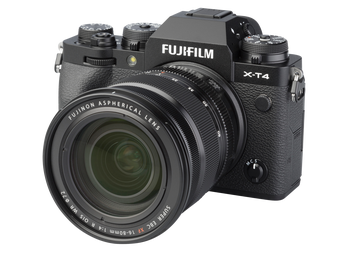- Exceptional image quality
- Robust build
- Advanced autofocus
- Compact and lightweight
- Excellent image quality
- Stabilized video
- User-friendly controls
- High-speed shooting
- Heavy and bulky
- Expensive
- Limited battery life
- APS-C sensor may not suit all
Nikon D850 vs Fujifilm X-T4
The world of photography is filled with incredible devices, each with its unique strengths and weaknesses. In this comparison, we'll delve into two high-end cameras: the Nikon D850 and the Fujifilm X-T4. Both are top-of-the-line models in their respective categories, with the Nikon D850 representing the pinnacle of DSLR cameras and the Fujifilm X-T4 embodying the latest advancements in mirrorless technology.
Sensor and Image Quality
The Nikon D850 boasts a full-frame 45.7-megapixel CMOS sensor, which is renowned for its exceptional image quality, dynamic range, and low-light performance. This sensor size allows for shallower depth of field and better isolation of subjects, making it ideal for portrait, landscape, and studio photography.
On the other hand, the Fujifilm X-T4 features a 26.1-megapixel APS-C X-Trans CMOS 4 sensor. While not full-frame, this sensor still delivers outstanding image quality with excellent color accuracy, contrast, and noise reduction. The X-T4's sensor is also designed to work in tandem with Fujifilm's proprietary X-Processor 4, which enables fast autofocus, improved video capabilities, and enhanced overall performance.
Autofocus and Speed
The Nikon D850 features a 153-point autofocus system, with 99 cross-type sensors that provide rapid and accurate subject tracking. This system is well-suited for capturing fast-moving subjects, such as wildlife or sports photography.
In contrast, the Fujifilm X-T4 boasts a 425-point phase-detection autofocus system, which covers almost the entire frame. This advanced AF system allows for incredibly fast and precise focusing, making it perfect for applications like wedding photography, where speed and accuracy are crucial.
Video Capabilities
The Fujifilm X-T4 is a powerhouse when it comes to video recording, offering 4K resolution at up to 60p, as well as 240p slow-motion in Full HD. The camera also features F-Log recording, which provides a wide dynamic range and greater flexibility during post-production.
While the Nikon D850 can also record 4K video, it tops out at 30p, and its slow-motion capabilities are limited to 120p in Full HD. However, the D850's full-frame sensor still delivers exceptional video quality, with excellent low-light performance and a shallow depth of field.
Ergonomics and Build Quality
As a representative of DSLR cameras, the Nikon D850 has a more traditional design, with a large optical viewfinder and a robust build that can withstand harsh environments. The camera's ergonomics are well-suited for photographers who prefer a more tactile experience, with plenty of buttons and dials for direct access to settings.
The Fujifilm X-T4, on the other hand, has a more compact and lightweight design, making it ideal for travel or street photography. The camera's electronic viewfinder is incredibly detailed, with a high refresh rate and minimal lag. While some photographers may prefer the more traditional feel of DSLR cameras, the X-T4's modern design and intuitive interface make it an excellent choice for those who value versatility and portability.
Conclusion
In conclusion, both the Nikon D850 and the Fujifilm X-T4 are exceptional cameras that cater to different needs and preferences. If you're invested in the world of DSLR cameras and require a full-frame sensor with outstanding image quality, the Nikon D850 is an excellent choice. However, if you're looking for a more modern, mirrorless design with advanced video capabilities and faster autofocus, the Fujifilm X-T4 is definitely worth considering.
Ultimately, the decision between these two cameras will depend on your specific needs, budget, and personal preferences. Whether you're a professional photographer or an enthusiast, both the Nikon D850 and the Fujifilm X-T4 are sure to deliver outstanding results and help you capture life's precious moments with incredible precision and beauty.

































